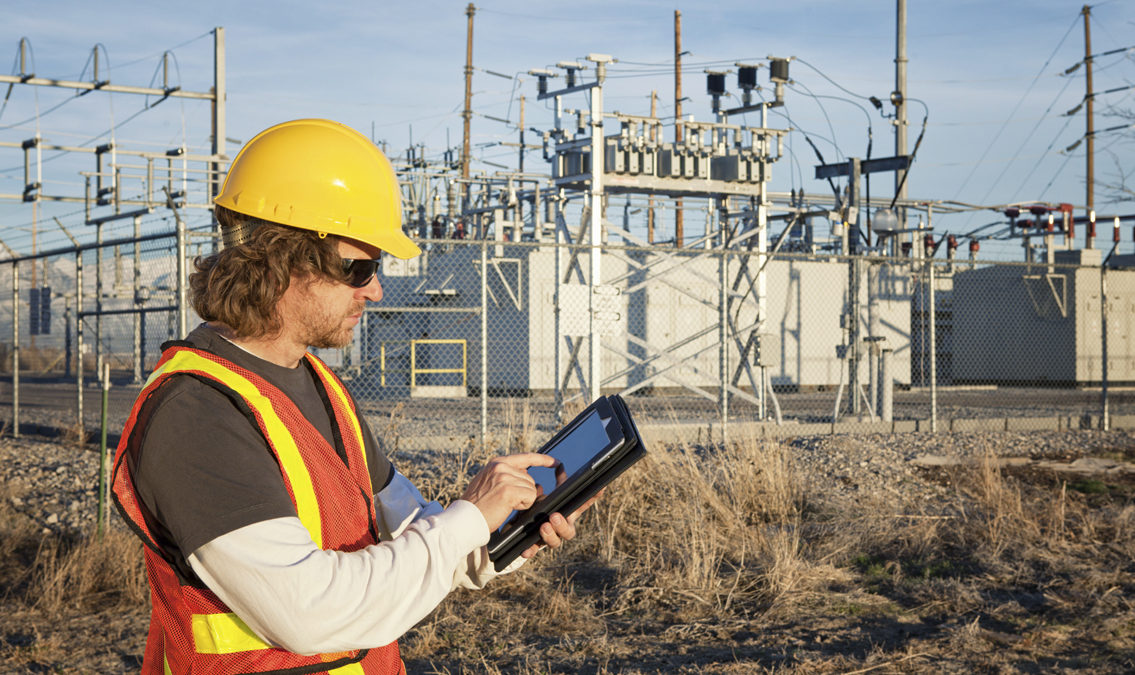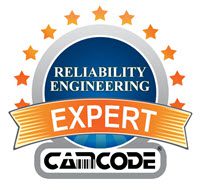Reliability Engineering Tools: 7 Experts Reveal Their Favorite Tools


There is the old saying that “a man is only as good as his tools,” and this is true for any craft or industry where accuracy and efficiency are crucial for success. One such industry where this applies particularly well is reliability engineering.
Since the warehouse & industrial property management products we provide here at Camcode are designed, created and used by many reliability engineers, we wanted to learn more about the needs of reliability engineers, and specifically, what are the must-have tools reliability engineers should have for the design and engineering process. To do this, we asked a panel of reliability engineering experts the following question:
”What’s the most important tool in a reliability engineer’s toolbox (and why is it so important)?”
See what our experts said below.

Did you participate on our panel? Get a custom expert badge here.
Mark Mason is the Engineering manager of Aegis Power Systems, a company producing rugged and reliable custom power supply units for military, industrial, telecomm, and other markets. He has 8 years experience with the RelCalc software and over 12 years experience with the Mil-HDBK-217 manual. Aegis has been using the Mil-Std-217 manual and NAVMAT P-4855-1A guidelines since incorporation in 1995 to maintain a high level of quality and reliability in all our products.
In my area of work, the most important tools in a reliability engineer’s tool belt are…
The Military Handbook 217 (Mil-HDBK-217) reliability calculator manual in combination with the RelCalc software.
This combination enables MTBF (mean time between failure) reliability rates to be predicted based on design. The automated calculating process achieved by the software improves efficiency and speed, while the Mil-Std-217 inputs the needed calculations to determine weak spots in design.
In addition to those two tools, the NAVMAT P-4855-1A guidelines manual gives excellent suggestions for reliability standards, including high-voltage requirements. Our CEO, Bill Dockery, assisted in the publication of this much needed industry booklet.
David E. Goldberg is President of Big Beacon, a nonprofit organization founded as a movement for the transformation of engineering education. He is known as an author, educator, entrepreneur, and artificial intelligence researcher. Author of the newly released book “A Whole New Engineer: The Coming Revolution in Engineering Education” and Co-Founder of ShareThis, in 2007 he also co-founded the Illinois Foundry for Innovation in Engineering Education (iFoundry). As a movement leader, leadership coach, and change management consultant, Dave now works with individuals, organizations, and networks around the world to collaboratively disrupt the status quo.
When we think of engineering tools, we typically think of something technical–mathematics, an algorithm, a process, a prototype, or a plan–but the most important tool in a reliability engineer’s toolbox is…
Trust.
Trusting oneself and knowing one’s capabilities (and limitations) is the starting point for an engineer showing up confidently in the tech workplace, able to collaborate with those whose expertise he or she needs, knowing how to contribute to finding problems or opportunities, and then coming up with solutions, products, processes, or services aligned with the things found.
After trusting oneself, one must have trust in others, not a naive kind of trust, but a knowing trust that both allows others to collaborate quickly and well, an unleashing trust that brings out more in everyone on the team. Recent change initiatives at the iFoundry incubator at the University of Illinois and upstart Franklin W. Olin College of Engineering have shown the importance of trust in unleashing the next generation of engineering students to a career filled with genuine lifelong learning and confident innovation in the face of an increasing pace of change.
Unfortunately, the current centroid of subject matter and curriculum in engineering education lies in the middle of a field of mathematics, physics, and engineering science, subjects that became most important after World War 2 in response to large organizations and an emphasis on narrow technical expertise. Trust and emotional variable are scarcely found, if discussed at all. A recent text, A Whole New Engineer: The Coming Revolution in Engineering Education suggests that the missing basics of engineering, things like joy, trust, courage, openness, and connection will soon be a more visible part of an engineer’s education and the engineers toolkit.
Randall C. Iliff is Vice President of Director of Strategy, Methods and Learning at bb7, a product development firm located in Madison, Wisconsin. Prior to this role, Randall was the Systems Engineering manager on a $300 Million dollar high-energy physics project called “IceCube“, that achieved spacecraft level reliability using off the shelf commercial parts. He currently works with commercial and industrial projects, and was previously involved in several major weapon system development projects. Randall holds a BS in Engineering Arts, MS in Systems Management, helped found the International Council on Systems Engineering (INCOSE, now a 10,000 person professional society) and is active in IEEE and PMI.
The most important tool in a reliability engineer’s tool belt is…
An intellectual understanding of the full system context.
By this I mean being able to account not only for reliability of the “parts” but also reliability of all of the interactions that exist amongst those parts and the environment in which they are expected to function. Throughout a 35-year career this has been the most dependable leading indicator of potential success or failure of a design effort.
Users, data sources, business processes, decision criteria, and many other “soft” factors have great influence on how reliably a device can perform its intended function – these are almost always overlooked by reliability specialists that focus exclusively on component properties.
Physics of failure principles can be very effectively utilized to examine the various types and levels of energy present in the environment, and how that energy may be coupled into the system and thus create failures. This type of analysis can be very effective, even in situation where little or no field data yet exists, but the option is available only when context is understood.
Jeremy Codiroli is currently the CEO of Sensum Consulting, a company that uses complex data analysis to transform raw data into applicable knowledge. Jeremy was formerly a reliability analyst/engineer for Georgia Pacific.
In my previous experience working in reliability engineering, the most important tools in a reliability engineer’s tool belt may seem strange, but I would say it is…
Excel.
A drill or hammer may fix something at first, but in order to obtain true reliability, one must be able to study the trends and patterns that show WHY a machine or part is failing. For example, the paper mill I worked at had a huge problem with steam joints failing. Their solution was to repair them when they broke and move on. I did an analysis and discovered that there were certain triggers that caused them to fail. We designed a plan to address the triggers (that originally seemed unrelated) and ended up saving over $700,000/year due to preventing the failures before they occurred.
Sarah Weinberger is a Software and Systems engineer, a Professional Career Coach and Founder and CEO of Butterflyvista Corporation.
All of the work that I do involves making products reliable and predictable. I am a bug finder and solver above and beyond everything else. Architecting and designing solutions come second, believe it or not. And in the course of my work, I have used many tools and test suites ranging from ones by Microsoft, Developer Express, and a host of others, yet the most important tool is…
Your own ability to be a detective.
This comes from an answer my UCLA electrical engineering advisor told me years ago, when I asked him the answer to a problem. He said that I will not always be with you. You have to learn to find the answer yourself. You have to learn to become a detective and analyze the situation looking at facts and taking them where they leave. The tools, be it going to the library or something else, are the means. Everything starts with you.
I never forgot those words. I was angry then, very angry. I was not the person to even look at after listening to him, but as time moved on and I entered engineering, those words rang true. An engineer is a detective and someone who has to weigh and analyze information. The specific tools to use start from one’s own skills, because once you understand the specifics of a problem, you can go to Google or pull whatever tool is necessary to get to the next level.
Adam Green is the President & Principal Engineer of Crosstown Engineering. Adam is an expert in the fields of foundation repair and soil and structure stabilization and is a seasoned land-development engineer. He’s performed hundreds of forensic evaluations of foundations and structures, and is a preferred mediating expert for disputes or differences of opinion regarding sinkhole activity, expansive soils, organic soils and remediation disputes. Adam regularly provides expert witness testimonies for various cases for depositions and trial. In total, Adam has been responsible for the forensic evaluation and repair of subterranean anomalies, aboveground damages and land-development design & permitting for over $50 million in project scope since 2001.
The most important tools in a reliability engineer’s toolbox are…
#1. Continuing Education
The most important tool an engineer has is his/her knowledge base and competence level. In order to gain expertise and develop a knowledge base, we must learn from others and continually and purposefully educate ourselves.
Most engineers are required to gather a certain amount of continuing education credits in order to renew their licenses with their respective Board of Professional Engineers (semi-annually). Continuing education includes online courses, conversations with other experts, research, formal coursework or even seminars. No matter the avenue taken, engineers must continually and persistently pursue education and a deeper knowledge base to keep themselves informed and competent.
#2 Quality Control Process
Engineers and their work need to be questioned and checked by other engineers and experts. Quality Control Processes are usually made up of a 3-5 step process where another professional reviews the engineer’s product and asks questions about the reasoning or calculations behind it. These reviews offer a different perspective and are intended to support integrity by identifying possible errors in calculations, methodology or the product itself.
Once reviewed, the original engineer is then responsible for correcting mistakes and responding to inquiries from the quality control check person. This process continues to go back and forth until the checker approved the engineer’s work.
Austin Netzley is the Founder of YoPro Wealth and ONE Pursuit Investments, LLC. He is an engineer who began trading stocks and seeking a more fulfilling entrepreneurial life. By 27 he was able to retire and begin his dream of helping others create wealth.
The most important tool in a reliability engineer’s toolbox is…
Perspective.
Taking a break after you figure out the solution, and gaining perspective before implementing it is the most important piece for engineers. In my own work, doing this helps me step away from the details and see the big picture before implementing my ‘brilliant’ solution.
If you’re one of our experts, let others know about it and display a custom badge on your site. Simply copy the code beneath a badge and paste it onto your website!
Our sales engineers are experts in automatic asset tracking, tagging and identification,a nd can answer all your questions. Get in touch now.
Lets Talk ›Enter your information and get a free checklist of the top questions to answer to plan a successful asset tagging project for any maintenance tracking or facility management system.